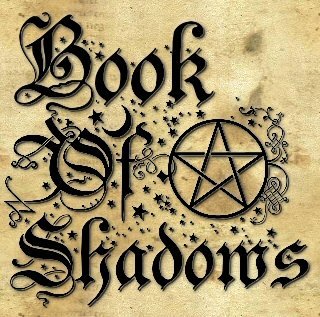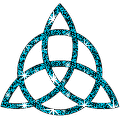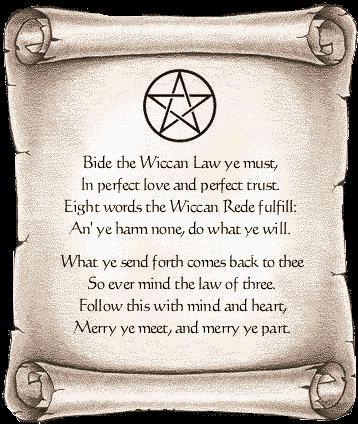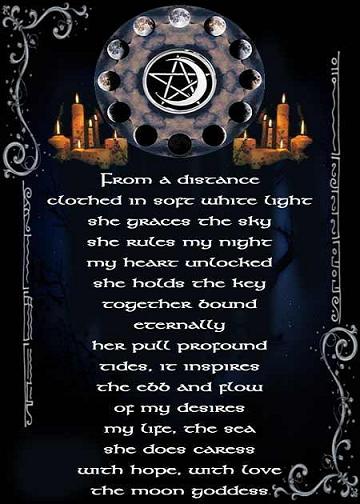I was searching the net for something interesting to read, and I came across another article on Chakras that was very enlightening, and I wanted to share it with you all.
*************************************************************************************

*************************************************************************************
From "Healing with the Chakra Energy System" by John R. Cross
Posted by: DailyOM
The Subtle Bodies
The number seven is prominent in many aspects of both Western and Eastern philosophy:
• The Earth was created in seven days, or more literally, in seven ages or eras.
• There are seven days in a week.
• There are seven times four days in a lunar month.
• There are seven musical notes in a scale.
• There are seven colors in the spectrum.
• There are said to be seven ages of humankind.
• The Bible refers to the life span as being seventy (seven time ten) years.
• There are seven layers of the skin.
• The physical body is said to change and reproduce itself every seven years.
• There are seven endocrine glands.
• There are seven major spiritual centers, or chakras, which are the seed from which the seven dense and subtle bodies spring.
• There are twenty-one (seven times three) minor chakras.
• There are seven hundred (seven times one hundred) acupuncture and major reflex points.
I could probably think of several more actual and contrived examples. Eastern philosophy talks about the seven heavens, or layers of existence, following the death of the physical body. It is said that the Buddha was transported to nirvana (seventh heaven) during meditation while on the earth plane. The number seven in mentioned in the Bible scores of times. It is mentioned in the book of Revelation (written by St. John the Divine at Patmos) no fewer than on thirty-four occasions, including several references to the seven spirits that man (and of course woman) possesses. It is also a sacred number in Judaism, indicating the perfection or the completion of things and is used often as a symbolic way to describe wholeness.
The seven subtle bodies are well-known in Eastern religious philosophy, and their meaning and connotations have changed little over the centuries. Each of these bodies has its own function and purpose. It would be impossible in this practical book to cover all seven in detail, and there is no real need so to do, except to explain their important relationships and how their energy imbalances produce signs and symptoms within the physical body. Since the majority of people reading this book will have been indoctrinated into the Western system of medicine, I realize how difficult it will be for someone to have his or her mind changed (and hence his or her clinical practice) simply by reading something from a new perspective. This book explores a philosophy that is mostly alien to our Western-taught ideas of physiology, and what, over the centuries, has become second nature to Eastern mystics, yogis, and the like is almost impossible to rationalize or quantify using science. There seems to be an obsession today with scientifically proving anything and everything, merely because we live in a scientific age. Questions about scientific validation would not have arisen fifty years ago. Having said that, science has made enormous strides over the past few years in attempting to validate “energy” body and energy medicine as a whole.
The Aura
It is generally understood that there are seven subtle bodies, including the Physical, that make up the aura, or the energy field emanating from living beings. Some authorities place the seven subtle bodies outside the physical body. They are the Physical, Etheric, Emotional, Mental, Intuitional, Monadic, and the Divine. Different philosophies and individuals have given these bodies other names, depending on whether they are discussed in Eastern religious, Hindu, Buddhist, or Western spiritual terms. The seven names mentioned above are simply those generally adopted and accepted. There are also subdivisions of the etheric body, and there are said to be at least two more subtle bodies further out from the Spiritual, the gateways of which are bound by two more subtle body chakras. Some very gifted people (clairvoyants) are able to see and interpret auras. Some people can feel auras but not see them, and still others can see colors. In all my years of investigation and clinical practice, I have come to be able to see the etheric layer and can also “feel” most of them. It is important to get a grasp of these subtle bodies before being introduced to the chakras. Knowledge and acceptance of them are fundamental to being able to learn and use the chakras. One cannot exist without the other. Let’s review them now.
The Physical Body
The physical body is the dense matter that is seen, touched, and felt by the majority of hands-on therapists. It is the one that we palpate, pummel, stroke, heat, or stick needles into. Looking at a person from a purely esoteric viewpoint, the physical or dense body has very little significance. A yogi or sage, for example, would not be interested in a physical body condition. To the rest of us mere mortals, however, it is the physical body that we treat using physical therapy, manipulation, acupressure, acupuncture, reflexology, biomagnetics, massage, craniosacral therapy, and so on. More important, it is the physical body that shows us the signs and symptoms of energy imbalance. Symptoms are golden pearls of information that are used by the practitioner in considering the cause of the disease and how steps can be taken to cure or balance the disease or condition.
Unless you are treating an obvious injury to the physical body, be it the result of a direct blow or repetitive strain, the cause of most disease is not within the physical body. Doctors can take blood samples, swabs, and cultures; surgeons can remove organs and perform intricate surgery in an attempt to heal, but they often perform these tasks in a misguided way. The physical body does not generally give the cause of disease (dis-ease)—it merely houses the symptoms. This point is extremely important and will be referred to again and again. Before you discard this book in sheer disbelief at the arrogance and treasonous statements I have made, let me assure you that treating the physical body with acupressure and other healing modalities through the chakras affects all the other subtle bodies and hence addresses the etiology, the true cause, of the disease or injury. What more could a healing practitioner want?
Of course, physical therapists treat and diagnose through the physical body and can achieve superb results by doing only this. Generally, though, many therapists treat mechanical conditions without necessarily thinking about whether the part of the body being treated has any connection to an endocrine gland, internal organ, or energy pathway, let alone a spiritual pathway. Each part of the physical body has all these associations, and when we become truly holistic practitioners, we should take all of them into account. It is not surprising, therefore, when the patient has certain reactions in areas of the body not being treated. The physical body has many areas of reflected pathways (that is, reflexes) that can be used in both diagnosis and treatment, some of which are already well-known in the traditional Oriental systems of medicine, applied kinesiology, and reflexology. When these reflected pathways are included in treatment, you will be able to make a truly holistic analysis and diagnosis, enabling you to assist the patient at a more in-depth level.
Physical therapists working with the physical body are all different and obviously take varied approaches. There are, sadly, a few bad practitioners, just as there are good and bad in every profession. These therapists are quite content to work at a purely local, symptomatic level. The experienced, conscientious physical therapist, however, will know, for instance, that a severe ankle inversion sprain that ¬hasn’t received any treatment will be followed in a short period of time by mechanical changes occurring elsewhere as a secondary effect. The muscles of eversion will become tight, causing possible subluxation of the talus and most certainly affecting the upper end of the fibula at the superior tibiofibular joint. In turn, this will create tension in the common peroneal nerve, the hip and sacroiliac joint, followed by pelvic tilting, thoracic scoliosis, and finally, atlas or even cranial misalignment.
Each of these mechanical deviations is the result of the original mechanical imbalance, and good osteopaths, chiropractors, or manipulative physical therapists can adjust the various joints in reverse order to produce alignment of the physical body. It is like peeling back the layers of the onion; the patient relives all the previous hurt, injury, and trauma that followed the original injury. This may occur in a transient way, with the patient almost unaware of changes, or the adjustments can have a huge impact.
The holistic therapist who appreciates that mind and body are one, and that the body is merely energy in various frequencies, will also know that in the same patient with an untreated ankle sprain, there will also be organic changes, initially with the bladder and the large intestine, possible skin irritation around the pudendum, then pain in the epigastric region, followed by a sore throat and finally dizziness, headache, or even tinnitus. The patient may also exhibit various emotional fluctuations between anxiety, fear, anger, and tearfulness. If you do not appreciate the emotional-physical tie-in, then you may think of patients who complain of such feelings and sensations following treatment as simply neurotic. You should also be aware that no symptoms be suppressed. Symptoms, which the patient exhibits to draw attention to the cause, are for guidance purposes only. They are not the disease itself, so they should never be suppressed with drugs, electrotherapy, symptomatic pain relief acupuncture, or any rub-on ointments unless you are treating a localized trauma.
The topic of mind-body relationships is a huge one and cannot be adequately covered in this book. It is, however, the subject of another book in the series, to be entitled The Holistic Spine, which will deal not only with the relationships between joints, muscles, organs, endocrine glands, and every vertebral level but also with how imbalances may be treated using physical therapy.
The Etheric Body
Structure
The word etheric comes from ether, meaning “the state between energy and matter.” This is the first body that although it is called “invisible” can nonetheless be seen by clairvoyants and indeed most children up to the age of seven, who treat it as quite normal. All life forms possess an etheric body. Animals and plants especially are blessed with very rich etheric energy fields. Children have much more abundant natural energy at an etheric level than adults do, and it is for this reason that children and animals answer so much better to treatment using subtle energy approaches than adults.
Though the etheric body is invisible to most of us, with diligence, it is possible to “tune in” and see it. Following many intensive courses on the subject, even I have been able to detect the denser part of the etheric body. There are two parts to the etheric body, the physical-etheric and the etheric-emotional. The physical etheric consists of a network of fine tubular threadlike channels commonly known as the nadis, and these are related to the cerebrospinal fluid, endocrine glands, and the autonomic nervous system. The nadis will be covered in more detail later in the chapter. These two parts of the etheric body are in constant communion with each other and are usually thought of as just one subtle body.
The etheric body is a weblike structure that is in constant motion and to clairvoyants appears as a bluish-gray light moving at great speed and mingling with the other subtle bodies. Some of the more esoteric texts mention that the etheric body is an exact replica of the physical body, containing organs and tissues and so forth. The outer edge of the physical-etheric body is approximately three quarters of an inch (two centimeters) from the physical body, and the outer border of the etheric-emotional body is approximately four inches (eight to ten centimeters) from the physical body. These distances vary enormously with the age, gender, and well-being of the person. A very well-balanced individual has a different etheric makeup than someone who is ill. In areas of inflammation of the physical body the color of the etheric is usually rich in color, and where there is a chronic condition, the etheric energy is more translucent, also showing a congestion and dullness in color. Figure 1.1 shows the subtle bodies of the aura. This is also shown as Color Plate 1.
Functions
The etheric body has three main functions that are all closely related. It acts as receiver, assimilator, and transmitter of vital force via the chakras. In other words, it represents a vast clearinghouse of energy from inside out and from outside in; it also assimilates and sifts the energy. It is the largest “colander” that human beings possess. The individual chakras themselves, as will be discussed in detail in the next chapter, are energy gateways between the physical body and the subtle bodies.
Evidence
What evidence is there, apart from clairvoyant sight, proving the existence of the etheric body and the remainder of the aura (the subtler bodies)? In 1869 Dr. Walter Kilner, intrigued by the claims of clairvoyants, began researching the human electrical field by using dyes, a glass lens, and a screen and “proved” the aura could be seen. Though he detected only the first layer of the etheric body, it was a major triumph. The first person to succeed in taking photographs of the aura was the Croatian engineer Nikola Testa. His earliest photographs were of auras around the fingertips, but he later photographed the entire body. Testa, who was also reputedly the founder of modern electrical power, used a large number of electrical wires attached to the body to make these images.
In 1939 the Soviet scientists Semyon and Valentina Kirlian came up with a more practical way of photographing the aura by using electrical plates that emitted a current. The person placed his or her hand on the condenser plate, an electrical charge was transferred from the plate to the fingertip, and a photograph was taken. Kirlian photography is still used today. It has, however, largely been superceded by aura-imaging techniques developed by Guy Coggins and others in 1980. This technique makes use of a special camera to produce a full spectrum of colors of the aura. Aura-imaging cameras have become an increasingly popular way of discovering what the aura looks like at any given moment. One’s aura changes according to mood, disposition, and physical illness, which means that to truly have a record of an individual’s aura, several photographs have to be taken in a short space of time. Guy is now working on an aura-video system so that the subtle body may be seen in movement.
Feel
Since touch and feel are at the core of this book, before reading any further, it would be a good idea for you to practice “feeling” the etheric body. You may have done this already at weekend workshops. If not, here are some simple instructions. Sit in a comfortable, relaxed position. Try not to have any extraneous thoughts whirring round in your head, but keep a clear and focused mind. Place your palms together a few inches away from the body. Gently part them to about shoulder width, still opposed to each other. Now very slowly, bring the hands closer together until they are about one inch apart. Repeat the exercise two or three times. What did you feel? The majority of people will feel some kind of “barrier,” albeit very subtle, when the hands are approximately four inches apart. Another barrier is often felt further out. Also, when the hands are brought very close together, a kind of buffer, similar to the poles of a magnet repelling each other, may be experienced. As a scientific test, this does not “prove” anything. It simply means that the majority of people who perform this exercise feel roughly the same thing. To me, though, this fact speaks volumes.
Paracelsus, sixteenth-century alchemist and physician, wrote of the etheric body: “Hence man has also an animal body and a sidereal [etheric] body, and both are one and not separated, the relationship between the two is as follows. The animal body, the body of flesh and blood, is in itself always dead. Only through the action of the sidereal body does the motion of life come into the other body. The sidereal body is fire and air, but it is also bound to the animal life in man, thus man consists of water, earth, fire and air.”
David Tansley, in his groundbreaking book Radionics and the Subtle Anatomy of Man, describes the etheric body as consisting of “fine energy threads or lines of force and light and is the archetype upon which the physical body form is built. It can best be described as a field of energy that underlies every cell and every atom of the physical body by permeating and interpenetrating every part of it and extending beyond to form a part of what is called the health aura.” The etheric body is simply the energy gateway to the physical body via the chakras producing an energy field within and without the physical. It has been called many things by different individuals and cultures throughout time. This force has been called prana, chi, ki, medicatrix naturae, odic force, huna, animal magnetism, pneuma, archaeus, universal energy, and life force, to mention just a few. In this book we will refer to it as vital force.
It is the manipulation of vital force within the etheric and physical bodies that brings about balance from imbalance, ease from disease, or harmony from disharmony. Within the etheric-fed physical body you can feel and use the vital force in many ways that will be discussed in this book. It can be with acupressure, reflexology, applied kinesiology, craniosacral therapy, various forms of soft tissue and joint mobilizing, and etheric healing. All these treatments are designed to bring about a balance of vital force within the individual.
Emotional (Astral) Body
Structure
The third body (and second subtle body) is generally called the emotional body because it involves our feelings. The border of its body is the same shape as that of the physical and etheric bodies, and it lies with an outer boundary of approximately ten to twelve inches (twenty to twenty-five centimeters) above the physical body. It does, however, intermingle with the etheric-emotional body and has an accentuated energy field around the top of the head and the midchest region. Its structure is much more fluid than that of the etheric, and most esoteric tomes agree that it does not duplicate the physical body. It appears to the clairvoyant as colored clouds of fine substance in continual fluid motion. The color is bluish-yellow near the rim of the etheric body, becoming more yellow-white toward the subtler region of the mental body.
Most clairvoyants (though not all in my experience) can see the emotional body, although it takes many days of painstaking focus and concentration for the those who are not naturally to perceive that there really is “something” more distant from the physical body than the etheric body. Barbara Ann Brennan, in her excellent book Hands of Light, writes,
This body interpenetrates the denser bodies that it surrounds. Its colors vary from brilliant clear hues to dark muddy ones, depending on the clarity or confusion of the feelings or energy that produces them. Clear and highly energized feelings such as love, excitement, joy, or anger are bright and clear; those feelings that are confused are dark and muddy. This body contains all the colors of the rainbow. Each chakra looks like a vortex of a different color and follows the colors of the rainbow.
These colors will be discussed further in Chapter 2.
Function
In the emotional body, multitudes of changes are constantly taking place, even if the individual is not appreciative of that fact. Each person is literally bombarded by stimuli of one sort or another from external and internal sources. The main function of the emotional body is to act as a filter, similarly to the etheric body, of stimuli coming toward the physical from the mental body and beyond and also of those stimuli created within the physical body. This process occurs without our knowledge; we are in blissful ignorance most of the time. It is only when an energy imbalance occurs in the emotional body or with the chakras that penetrate it that we are made aware that something is occurring.
The changes in our emotions can ultimately lead to changes, and hence symptoms, in the physical body. It is said that the vast majority of imbalance in the physical body are created by an aggravation of the emotional body. This aggravation, in turn, is caused by constant negative emotions, such as anger or fear, within the emotional body or the filtering of “thought forms” from the mental body. When a person has negative emotional feelings and sensations, even for a short while, the destructive potential created within the emotional body eventually affects that area of the physical body to which it is associated. Shyness and an inability to express one’s emotions easily, for example, are quite often represented in disharmony of the Throat chakra, resulting in symptoms around the throat, shoulders, and large intestine. It is also said that the many viruses affecting the physical body via the chakras emanate from the emotional body. When there is strong and long lasting emotional imbalance, clairvoyants quite often see areas of dullness in the astral field that become more lucid and energetic with treatment. The emotional body is probably the most complex and the most active of all the subtle bodies.
Evidence
The emotional body is considered the highest of the “lower self” (a person’s subtle body constitution), with the remaining four subtle bodies representing the “higher self” or our more “spiritual” aspect. Although proof of the existence of the emotional body has relied very heavily on the sightings of many hundreds of clairvoyants, the scientific evidence is scant. At one time it was thought that Kirlian photography was capturing the emotional body. Although this is now known not to be the case, claims have been made that aura-soma photography can depict the emotional body. Research in this area is ongoing.
Feel
It is relatively easy, with suitable training, to feel the emotional body. This is particularly true when feeling the boundaries between it and the etheric and the mental bodies. One can feel a definite sensation difference at the boundaries. The feeling on the therapist’s hands are most acute when placed over the chakra at the emotional level (which is the size of a large plate at the emotional-mental border), but may also be felt at nonchakra parts of the body. These relative sensations will be discussed in the final chapter.
Mental Body
Structure
The mental body is said to be the lowest of the “higher,” or spiritual, self. It can extend as much as thirty inches (seventy-five centimeters) from the physical body and is obviously much less dense than the bodies previously discussed. The fine substance that constitutes the mental body is whitish-yellow and has a very rapid vibrational rate compared with that of the denser bodies. It is this subtle body (and those beyond) that is used by spiritual healers in their “off-body” healing.
Function
The substance that makes up the mental body concerns thoughts and mental processes, sometimes called “thought forms.” In simple language, when we think, this is the region where our thoughts originate. What we think affects us and those with whom we come into contact. If our natures are engendering, positive, and helpful, and we direct lots of lovely thoughts toward our fellow human beings (and ourselves), we feel well. In contrast, if we show negativity, hatred, pessimism, grief, sorrow, or depressive tendencies, these are eventually reflected in our physical makeup.
There is a hackneyed phrase that “we are what we eat,” which to a certain extent is true, but it is even more true that we become what we think. Not only do we feel better within when we exhibit positive thought patterns but also, after a while the chemistry within the body changes; the blood chemistry, hormonal levels, and organic secretions all change. Many changes also take place within the autonomic nervous system, which then proceeds to affect the central nervous system. If we have nothing but negative thoughts, then we eventually destroy ourselves. We are totally responsible for our own health, or as much of our health as we have been granted at conception and birth, bearing in mind that various environmental factors may also affect us. This is a very simple philosophy—show compassion and love to all we meet, and be aware of shortcomings and failures. And try not to show egotism and selfishness, since these are both negative.
Evidence
As stated earlier, apart from the gifted clairvoyants, it is very difficult for most people to detect the mental body. Research is ongoing at the moment, and scientists are developing electrical apparatus capable of detecting the very high vibrations that exist within this body.
Feel
As with the emotional body, it is possible to feel the mental body. However, it takes a great deal of dedicated focus and training to do so. Like most things in life, practice makes perfect, and the more the potential therapist tries to feel the subtle bodies, the more he or she will succeed. The use of noncontact healing will be discussed in the final chapter.
The Intuitional, Monadic, and Divine Bodies
The three remaining subtle bodies are called the intuitional, monadic, and divine. These bodies are given several different names, depending on the philosophy and culture. Barbara Ann Brennan calls them the Etheric Template, the Celestial Template, and the Ketheric Template or the Causal body. The more esoteric or Buddhic literature calls them the Buddhic, Atmic, and Logoic, or Spiritual. It ¬doesn’t really matter what we call them. The important thing to realize is that each body is subtler and finer than its more proximal neighbor and that the chakras penetrate them all, thus providing a communion between a human being and his or her spiritual entity. It is beyond the scope of this text to describe these bodies further. If you wish to know more about them, many esoteric and metaphysical books that describe them more fully are available.
For those of you who have studied yoga, meditation, theosophy, anthroposophical medicine, or some of the Eastern religions, perhaps you are already familiar with much of what has been discussed so far. If, however, you have been wedded to a Western philosophy of medicine, you have had to take a deep breath to accept these theories at face value, just as I did many years ago. In time, you will come to acknowledge that the healing of our many ills comes from this knowledge. The many healing modalities, both subtle and physical, cannot be rationally explained without it.
The Chakras
The word chakra is Sanskrit for “wheel.” The chakras are said to be “force centers” or whorls of energy permeating, from a point on the physical body, the layers of the subtle bodies in an ever-increasing fan-shaped formation. Rotating vortices of subtle matter, they are considered the focal points for the reception and transmission of energies. A clairvoyant can easily see these energy centers.
Each is different in form, makeup, color, and frequency. There are said to be seven major chakras, twenty-one minor chakras, and over seven hundred minichakras on the body that relate to acupuncture and major reflex points. The seven major chakras have contact with the physical body as single acupoints. Although most Eastern, Western, and New Age authorities accept that there are seven major chakras, it is apparent from research and personal experience that at least two other chakras exist that do not have direct contact with the physical body. They exist in the emotional body and beyond, above the Crown chakra. These will be discussed in the final chapter. Some authorities believe there are as many as nine major chakras and forty minor chakras, and others think there are as few as three majors and eight minors.
The study of chakras is lifelong. Indeed, the entire concept is based on many different philosophies and cultures, some of which will be considered in this book. Some authorities insist that the power to influence the chakras lies totally within the mind—as in kundalini yoga and some forms of meditation—while others dismiss this notion and say that energy can only be influenced through healing modalities. The main philosophies are Buddhic, Hindu, Theosophical, anthropomorphic, New Age, and various individual Western ideas based on a potpourri and combinations of these. This book deals with how the centers may be influenced with various disciplines of therapy, especially those based on the works of Alice A. Bailey (Theosophical) and David Tansley (Western), plus a few others. The majority of this book, however, is based on my own observations and experiences.
Structure
The structure of a chakra differs from chakra to chakra and depends on the age of the person in question. Its general shape can be likened to an inverted ice cream cone, with the narrow end “attached” to the physical body. The size of the chakra at the outer border of the etheric body is approximately two inches; at the outer border of the emotional body it is the size of a saucer, and at the outer border of the mental body it is the size of a small dinner plate. Therefore, it can easily be seen that at the subtler levels away from the body the various major chakras intermingle their energies. (Figure 1.1 and Color Plate 1 show the major chakras and their interpenetrating of the subtle bodies. See also Color Plates 2–8 showing a clairvoyant’s interpretation of the chakras, as well as Figure 5.2.)
The Crown and Base chakras of a baby are shaped like those of an adult, whereas the remaining five chakras are small and round, since they do not fully function until a person reaches the age of seven or thereabouts. The Base or Root chakra is said to deal with conceptual or ancestral energy, and the Crown deals with our spiritual awareness. At the age of seven, the Sacral chakra begins to function properly. The Solar Plexus chakra and so on follow this. It is at this time that the shape of the chakra changes to the typical inverted ice-cream cone shape of the adult. In each chakra there are four or more components of rotating vortices that form smaller chakras, and they seem to be cylindrical in shape. It is these individual components that vibrate and resonate to a particular frequency. The lower chakras resonate somewhat slowly, while the Brow and Crown chakras resonate at a phenomenal rate. These differences can be felt with practice—indeed with enough practice you can feel the differences in different parts of the chakra at an etheric, emotional, or mental level and to ascertain what treatment is required. This will be discussed at greater length in Chapter 5.
The Base chakra consists of four rotating vortices, the Sacral Chakra has six, the Solar Plexus has ten, the Heart has twelve, the Throat has sixteen, the Brow has ninety-six, and the Crown has a staggering 972. This is why the Crown chakra is called the thousand-petaled lotus (except in actual fact it is twenty-eight short of the magic number). As well as being divided into four or more whirling spherical components, each chakra, it is said, has a central “core” with radiating segments, rather like the cornea and iris in the eye.
The most important aspect of the structure of each chakra for the therapist to know, whether treating in an on- or off-body mode, is that each chakra is very different in its anatomy and function. It is only by constantly feeling, sensing, and being aware of their differences in structure and functions that you will begin to grasp their clinical and therapeutic importance. The chakras really do exist. It is difficult in the extreme to extol the virtues of invisible subtle energy with very little scientific evidence. I strongly suggest that you attend a suitable workshop on the subject so that you can learn to feel them. It is impossible to practice just from reading a book. Having said that, if you follow the practical chapters diligently and start to use the chakras in harmonizing the physical body, you will not go wrong. Do not start by going straight to the emotional body—it will not work. We must learn to walk before we can run!
Functions
The chakras have three functions:
• to vitalize and harmonize the physical, etheric, and emotional bodies
• to facilitate the development of self-consciousness
• to transmit spiritual energy, thereby bringing the individual into a state of spiritual being
The first function is undertaken with the therapies taught in this book. This is true, to a certain extent, of the second function as well, in that with treatment, the patient is made more whole in mind, body, and spirit. The third function remains the purview of the meditation arts and the various forms of yoga.
According to Tansley, in Radionics and the Subtle Anatomy of Man, the chakras can become imbalanced in three different ways: by becoming congested, overstimulated, or uncoordinated. These states of imbalance often do not appear alone but in combination with another state. Let us explore these imbalances below.
From Healing with the Chakra Energy System by John R. Cross, published by North Atlantic Books, copyright © 2006 by John R. Cross. Reprinted by permission of publisher.










































1 comment:
interesting post, I need to comeback to read this properly when it's not 2 in themorning! a paragraph or two on ETHERIC BODY caught my eye- i have been told once I have a weak etheric body(I guess it means I'm sensitive to environment etc)- wonder how do you strengthen this?!
Post a Comment